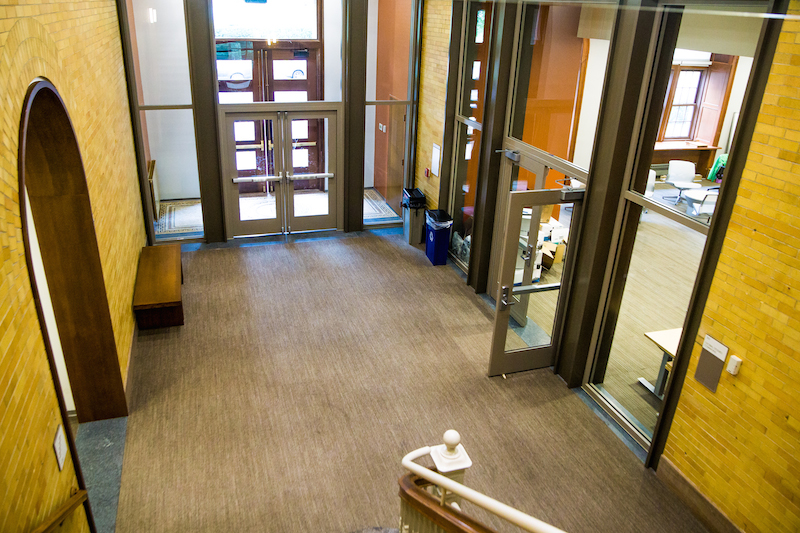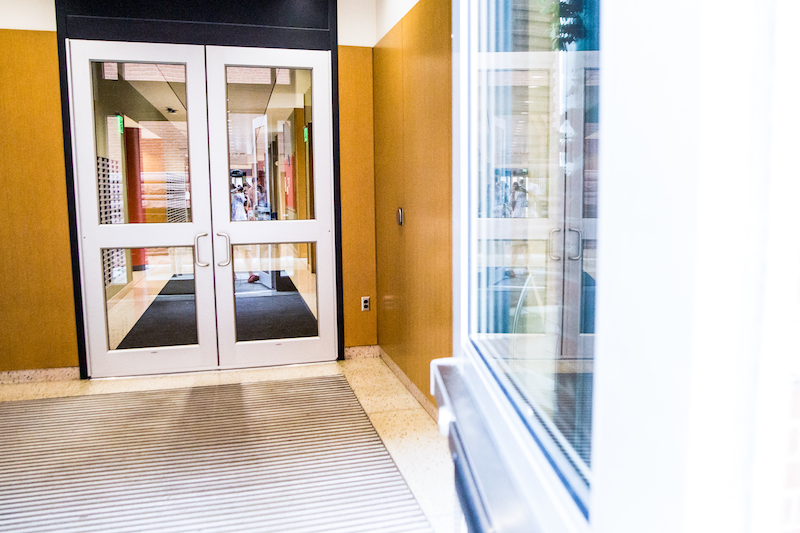The University has been at work on a number of projects that are beginning to catch students’ eyes as they near completion this fall. Capital projects, as they’re known, are efforts by the University and contractors to beautify, renovate, and generally improve campus infrastructure.
Roseann Sillasen, currently the Associate Director and Project Manager of Construction Services at the University, spoke with The Argus about the projects in depth, touching on everything from strategy to logistics. The most important aspect of these projects for Sillasen is preplanning.
“Most [important] is meticulous preplanning,” she wrote in an email to The Argus. “The scope of work must be very clear and concise to obtain the most competitive bids. Early receipt of shop drawings for review and approval is required for timely material and equipment ordering and delivery.”
Once the projects are planned, their ambitious scale becomes a reality. Landscaping projects this summer took place in the Butterfield dorms, College Row, the Center for the Arts, around the Van Vleck Observatory, the south side of the Fauver apartments, the north side of the Shanklin Laboratories, the south side of Fayerweather, and finally the newly named Boger Hall (formerly 41 Wyllys).
Parking and driveway surfaces were replaced between 202 and 256 Washington Street, as well as at 156 High Street. Sprinklers were installed in front of Olin Library.
That’s not to mention the new sidewalk in front of Exley Science Center, the gutting and renovation of Fisk’s interior, the new decks on several houses in senior village, nor the new trash collection areas on Pine, Fountain, and Warren Streets.
These renovations are part of what the University describes as a “multi-year list of priorities” based on input from students and staff. Each September, students and faculty receive an email from the University asking for suggestions that are then considered by a variety of staff members from Physical Plant and North College.
Capital projects are crucial for the university because of the impression that the campus and its infrastructure makes on prospective students.
“Researchers have found that the condition of campus buildings and grounds has an impact on the recruitment and retention of students,” Sillasen said. “We do not expect a student to choose Wesleyan because of the beautiful landscape, but, a poorly maintained landscape would detract from a favorable impression of Wesleyan. We are interested in attracting all students.”
Yet not all students will be pleased with the completed renovations. One example is the new doors in Usdan, which are a mixture of metal and glass and replace the previous all-glass windows. Before students lament the aesthetic change, however, Sillasen laid out the advantages to the new doors.
“The original glass doors at Usdan were beautiful yet continually needed service to keep them operational,” she said. “The existing glass doors would bend when they were forced. Also, the existing glass doors used recessed, in-floor closers. The elements and de-icing products caused those closers to fail which became a continuing maintenance issue. The new doors have a more substantial frame for the level of traffic in and out of Usdan and allowed us to use a continuous hinge which is more durable and less susceptible to de-icing product intrusion.”
Another goal of the capital projects is to create more “informal learning spaces,” a term you may have heard from University President Michael Roth or a University major with a concentration in educational development. The latest example is Fisk Hall, one of the University’s oldest buildings that has been modernized this summer.
“The creation of the Fisk patio is twofold,” Sillasen said. “We had a major capital improvement to the first and second floors of the building that allowed us to improve some of the landscape on a major corner at the center of campus. Secondly, in response to our recent Sasaki Campus Planning study, we want to create more formal and informal social and learning spaces on campus. Furniture will be placed outside for either lunch with a friend or a colleague or a class because it is a beautiful day.”
Up the hill from the grand plans for Fisk, pure and nasty logistics motivate the new garbage collecting areas in senior village. The dense population of the 75 homes on Warren Street, Cross Street, Fountain Avenue, and Pine Street along with cars parked along the sidewalks proved to be challenging enough to Middletown garbage workers that trash would often overflow and not be picked up regularly. To mitigate this problem, the University and the city have established three garbage collecting zones on Pine, Fountain, and Warren.
“The results of this effort will be ease of use, uncluttered streets, cleaner grounds, and hopefully better recycling rates by these wood-frame houses,” Sillasen said.
Some students may not notice the improvements and work that have gone into improving the campus, but Sillasen underscored that students should care.
“Students should care about these projects because they enhance the learning environment, the social environment, and make Wesleyan a better steward of natural resources,” she said.
- Jonas Powell, Photo Editor
- Jonas Powell, Photo Editor

